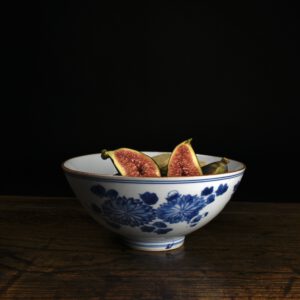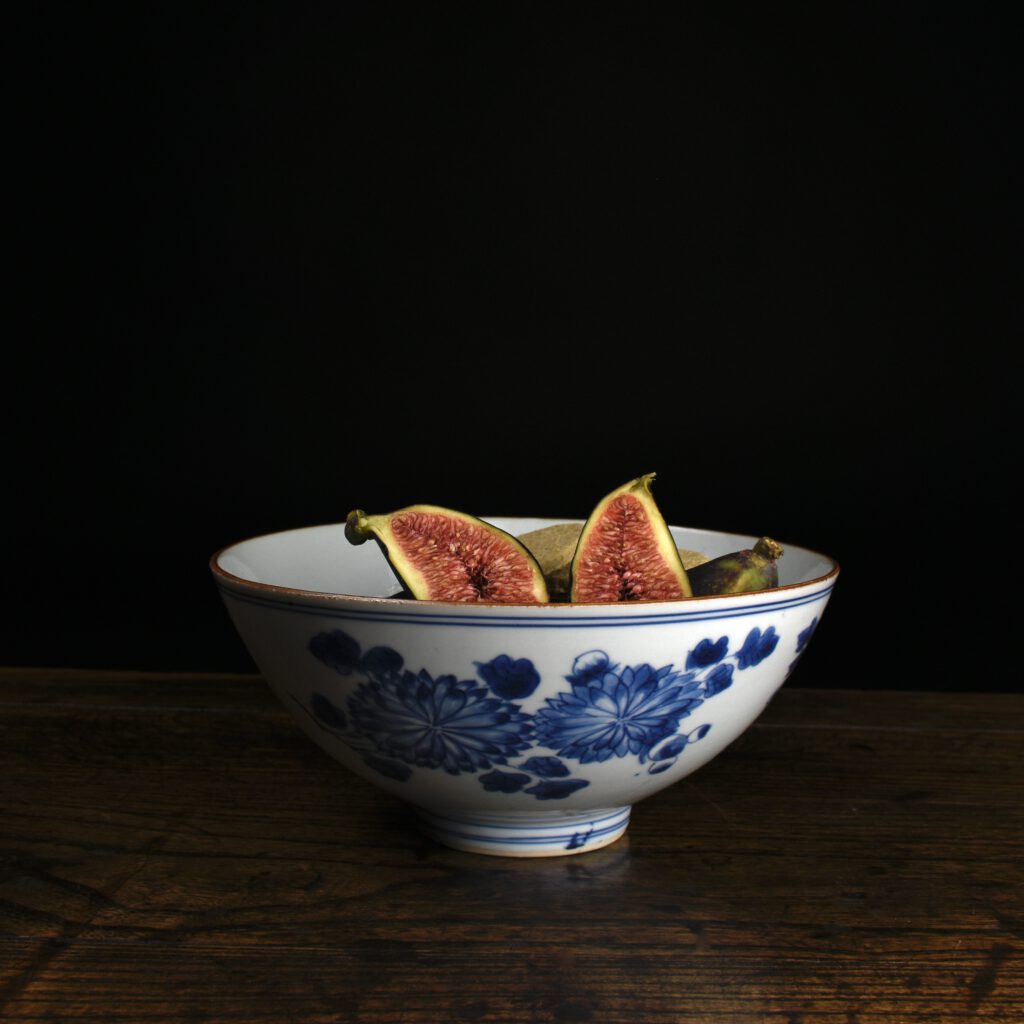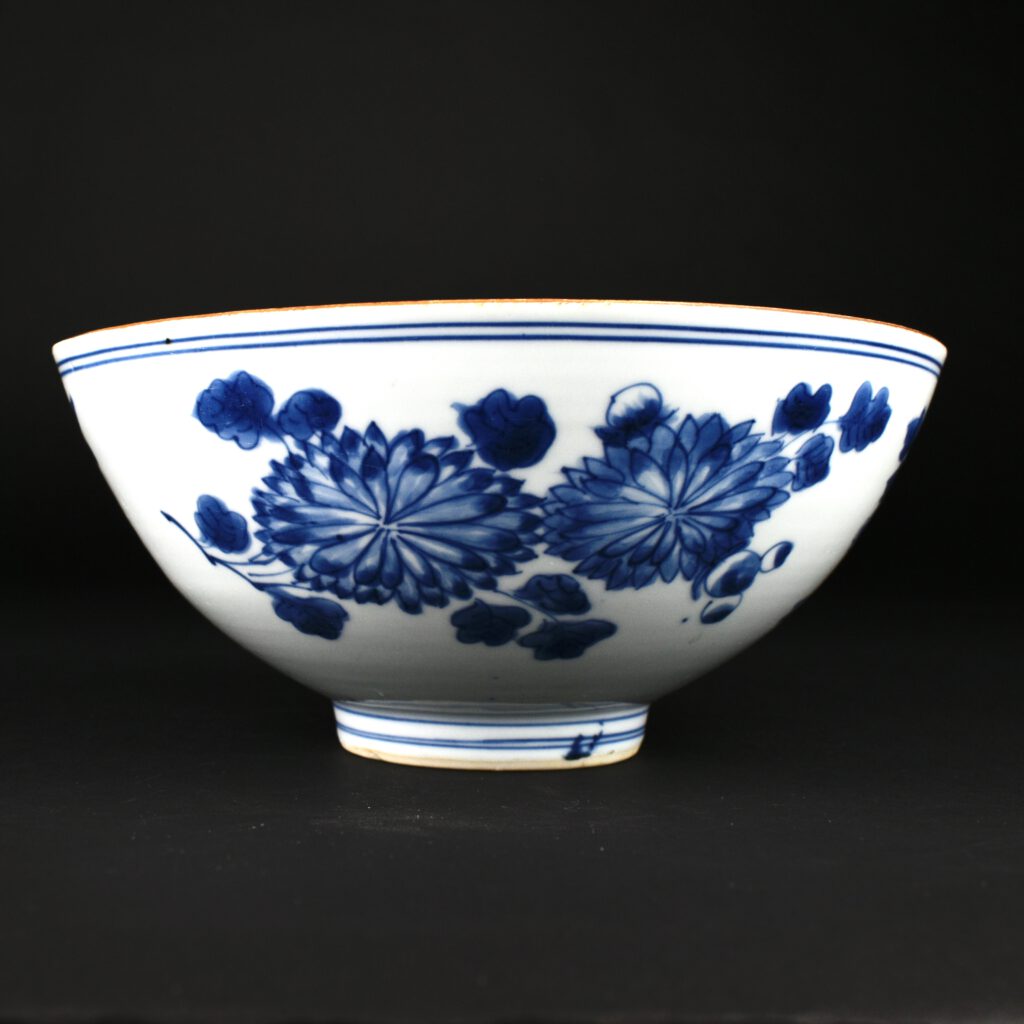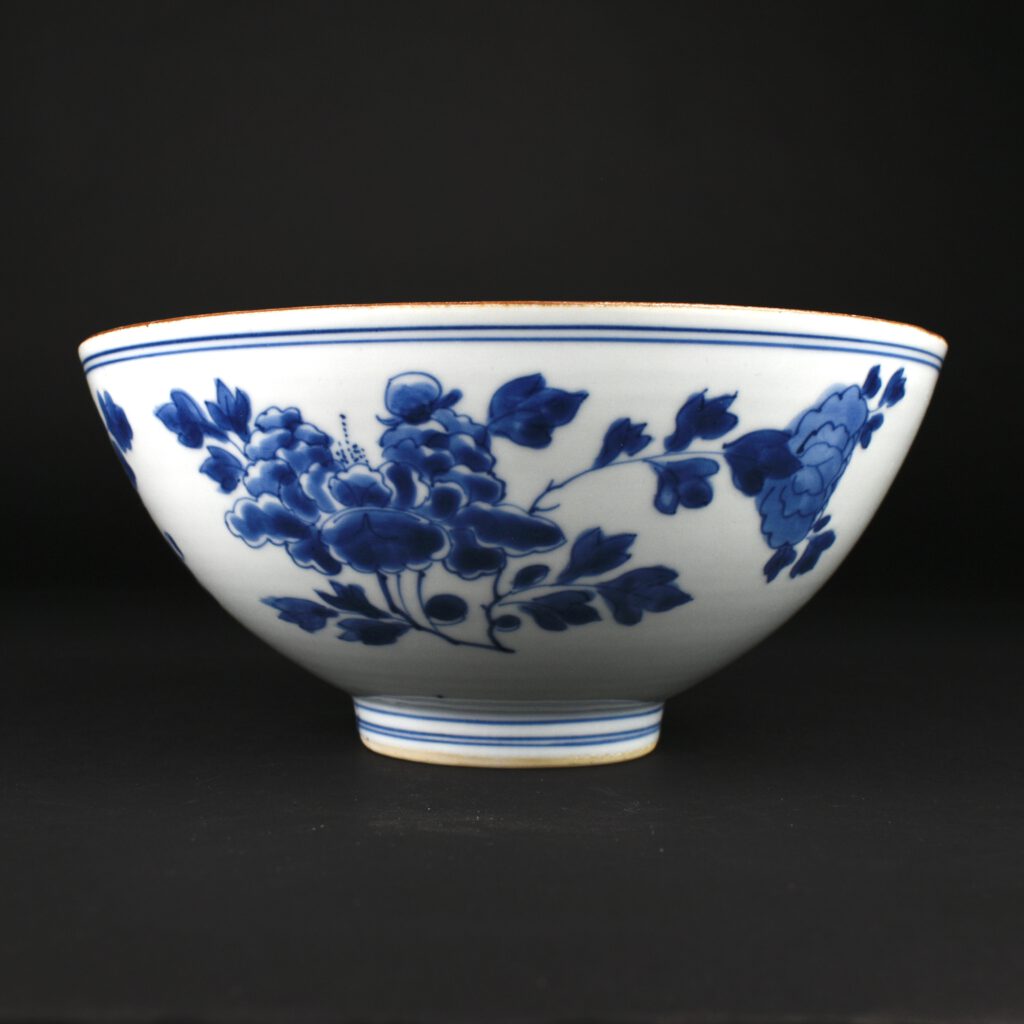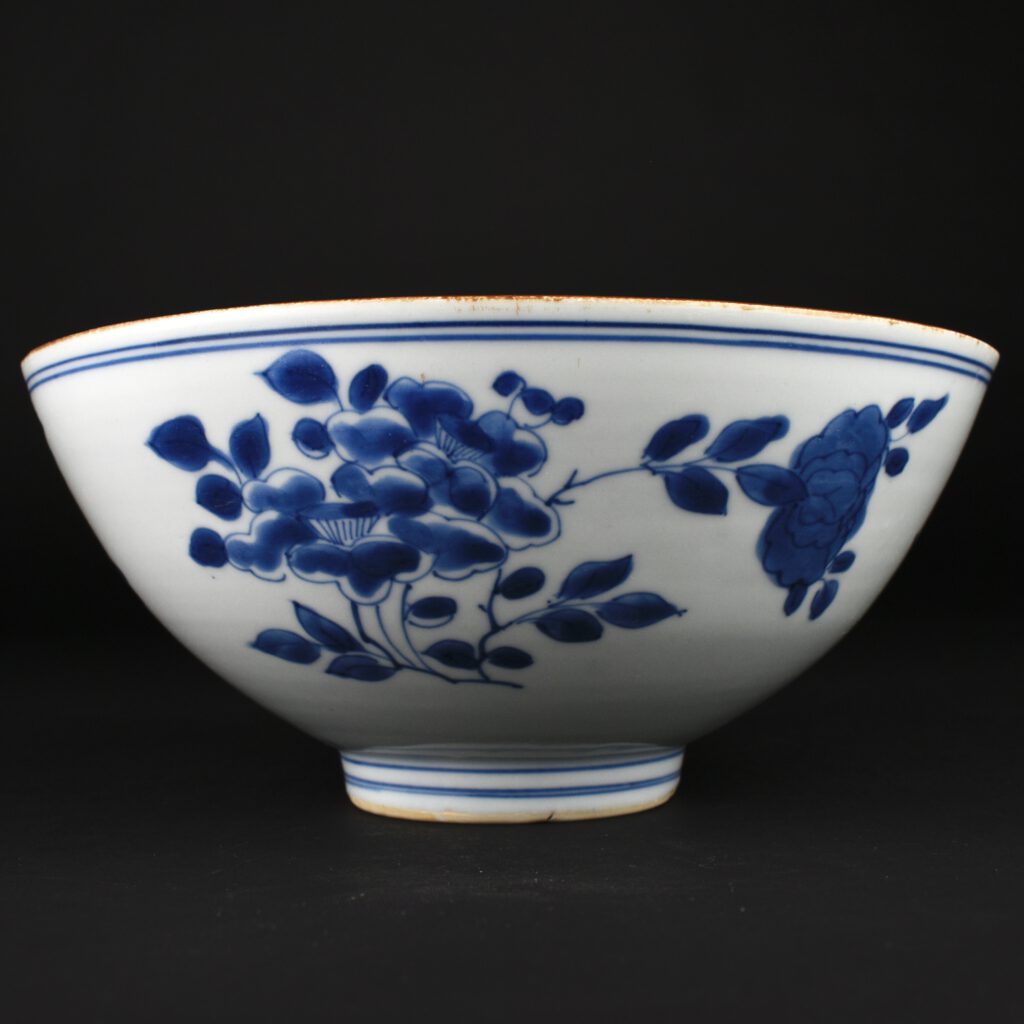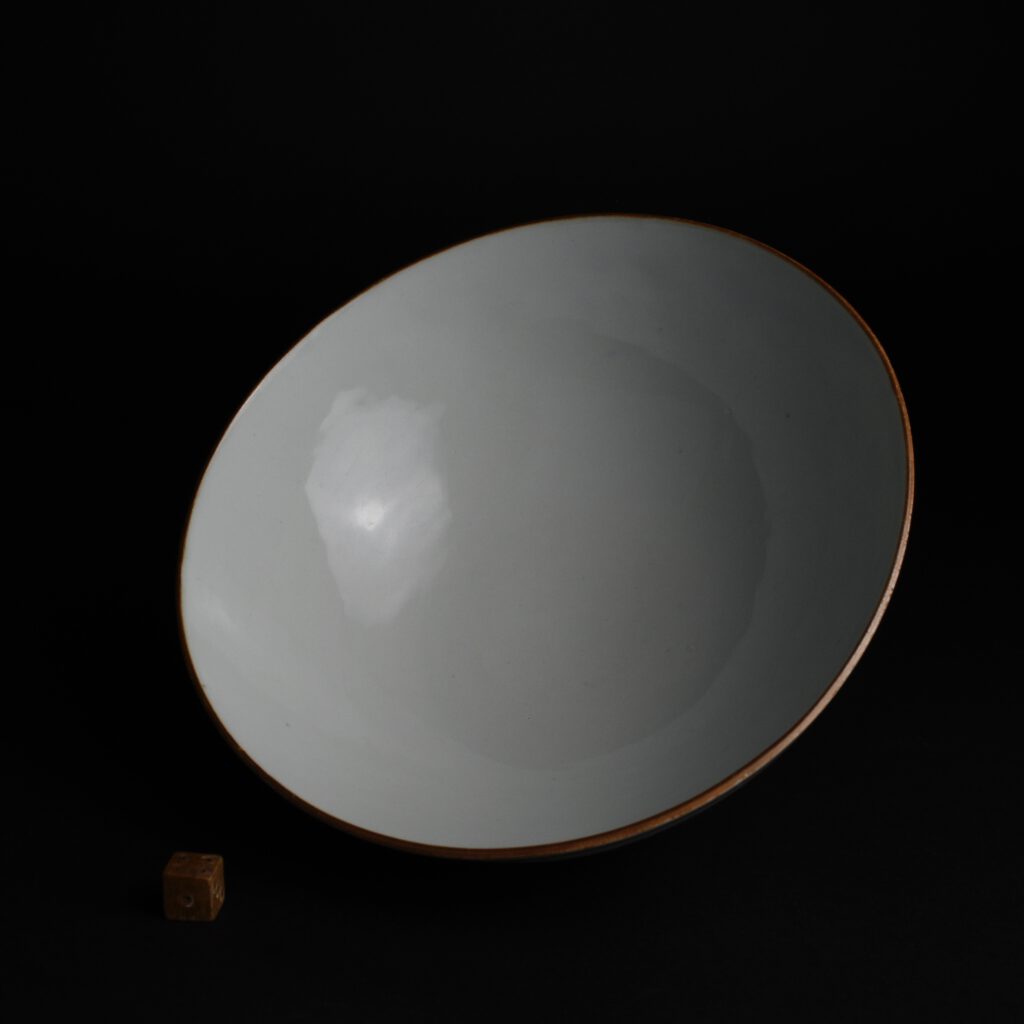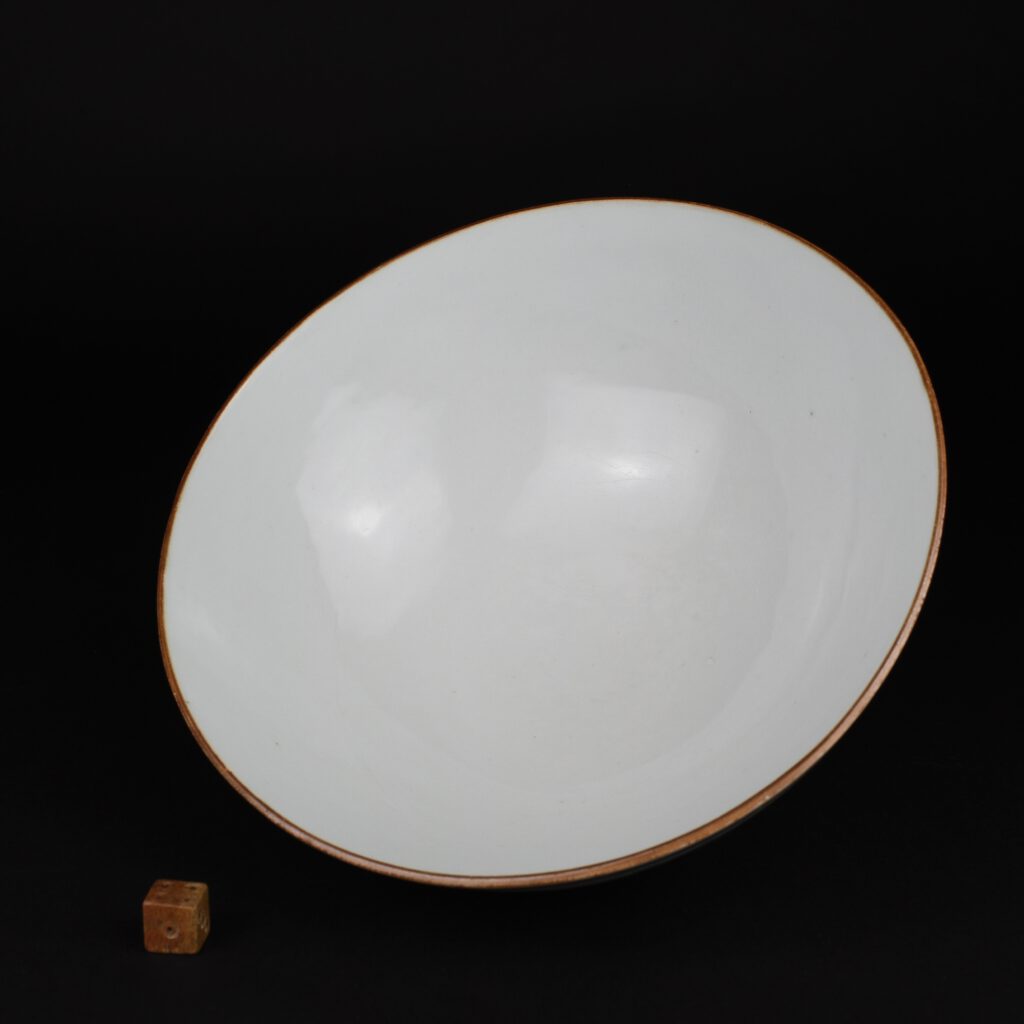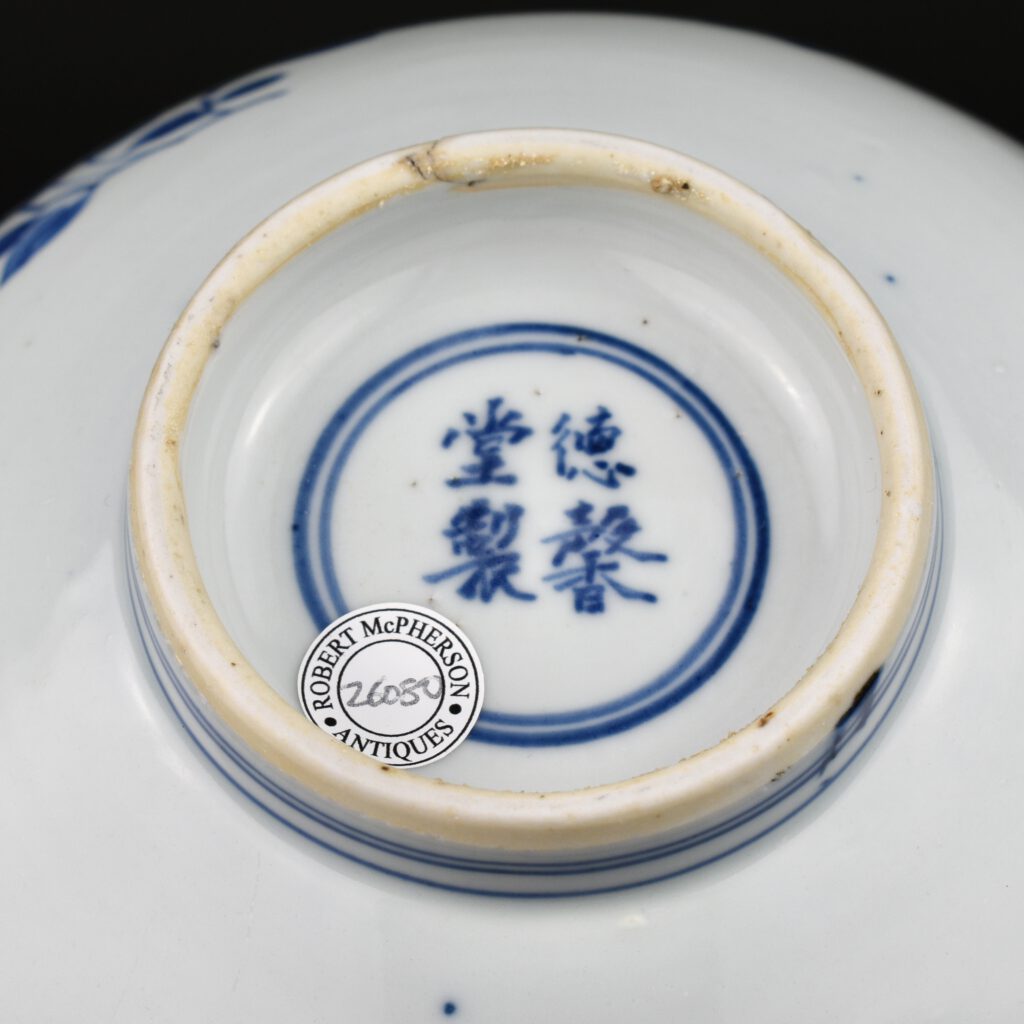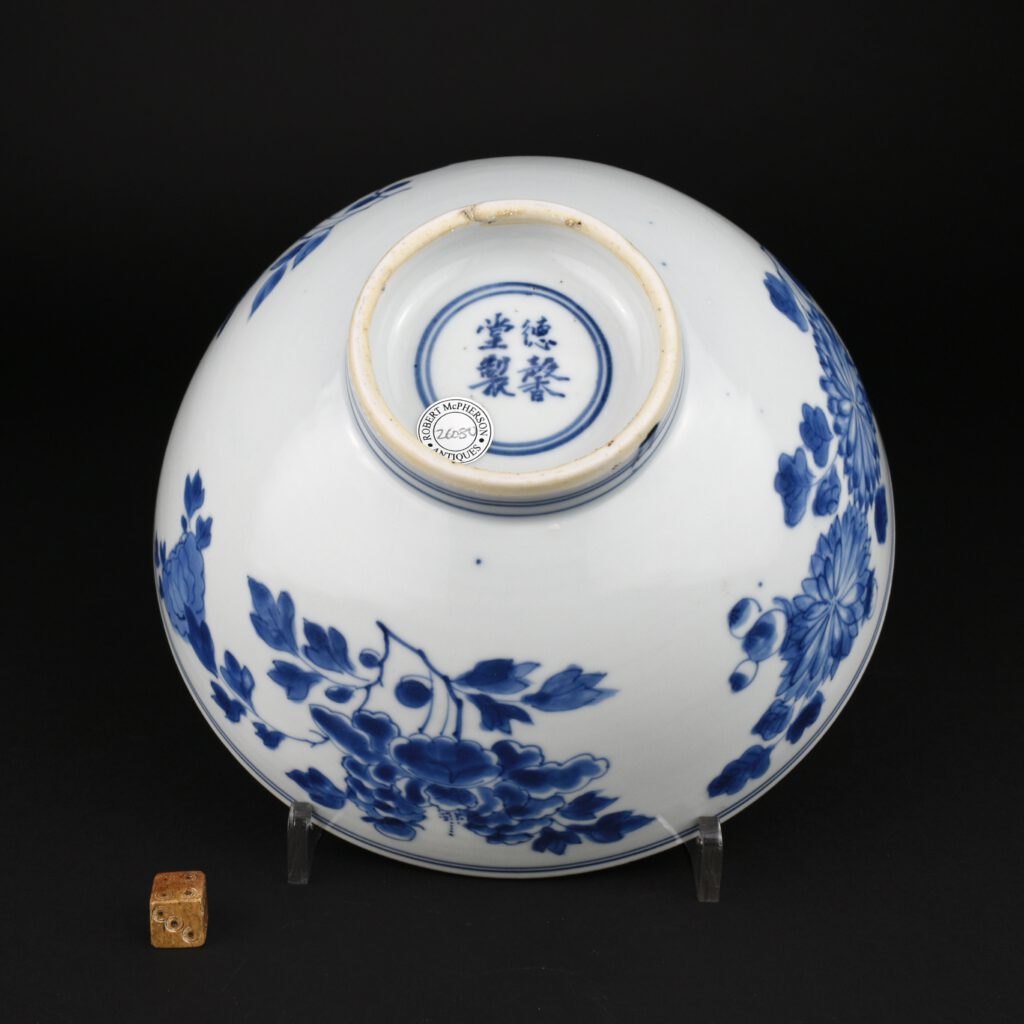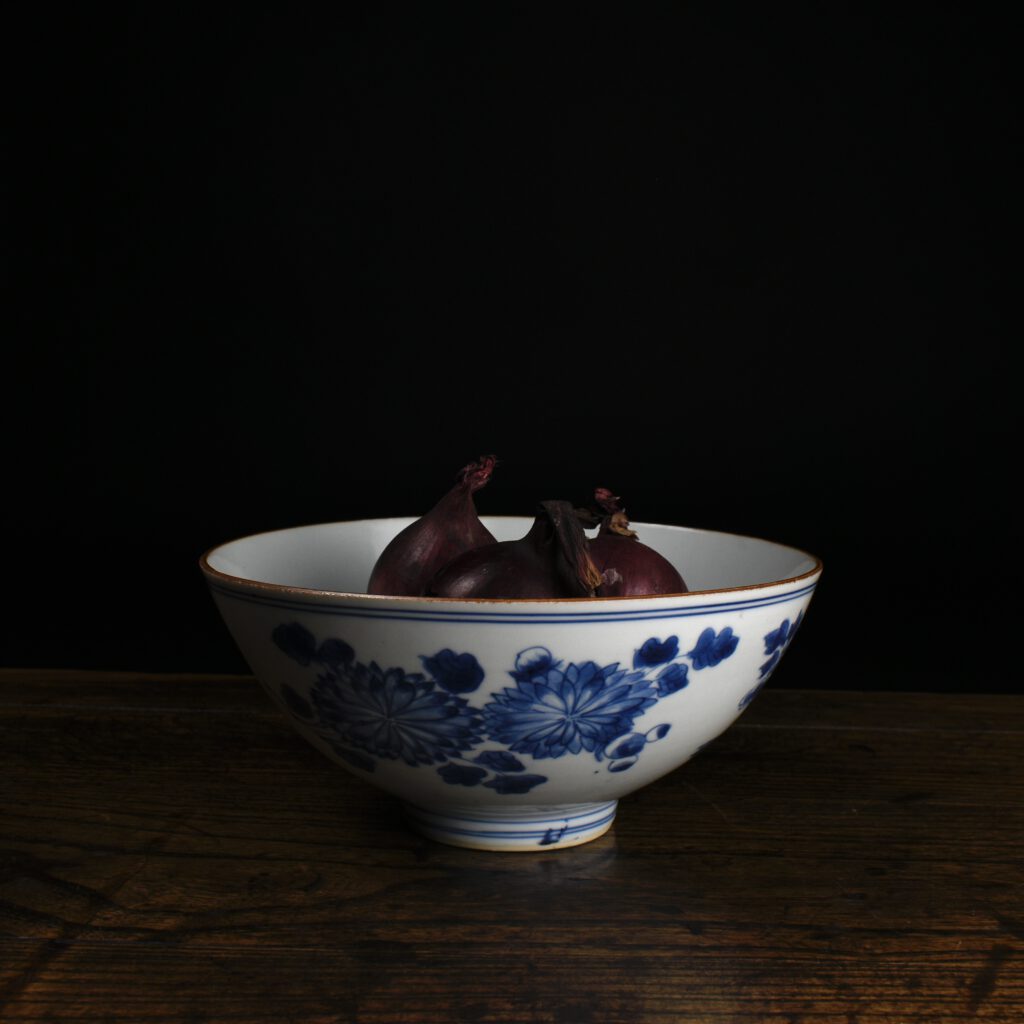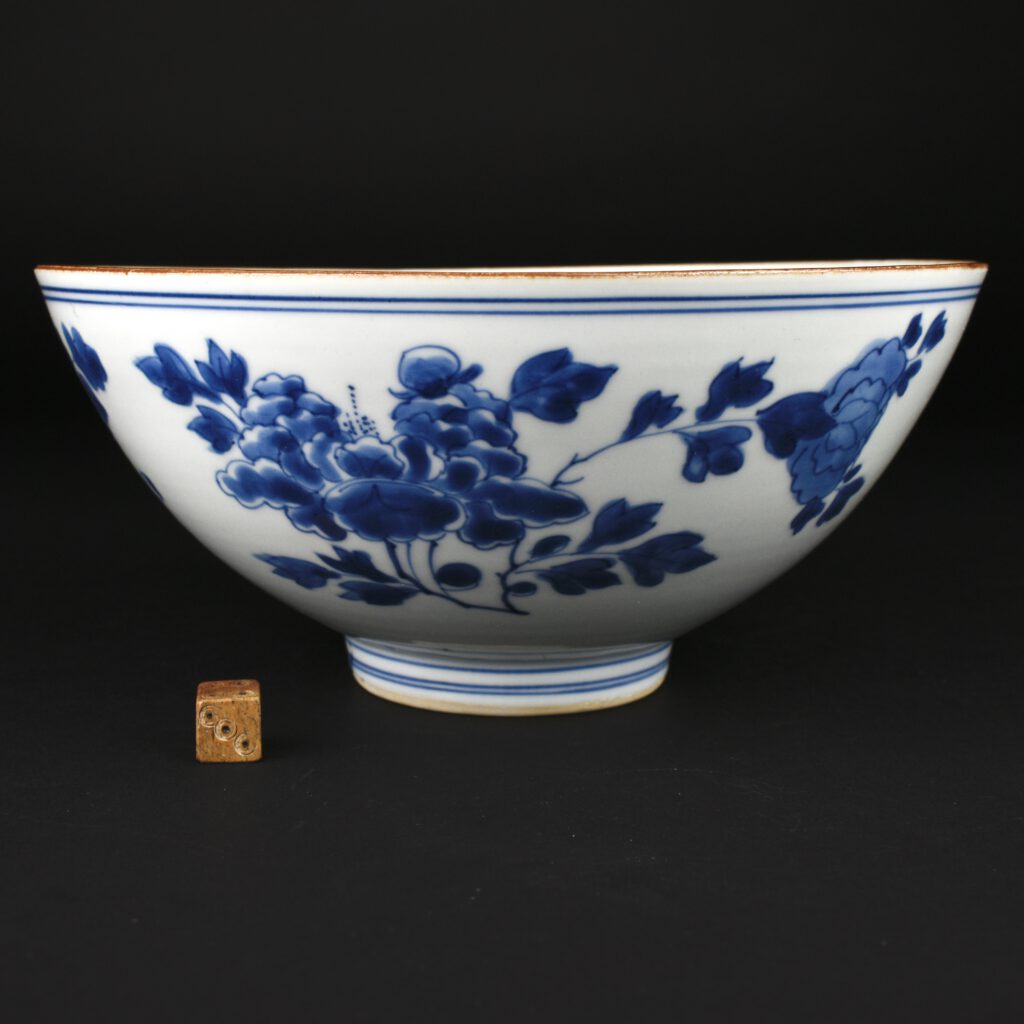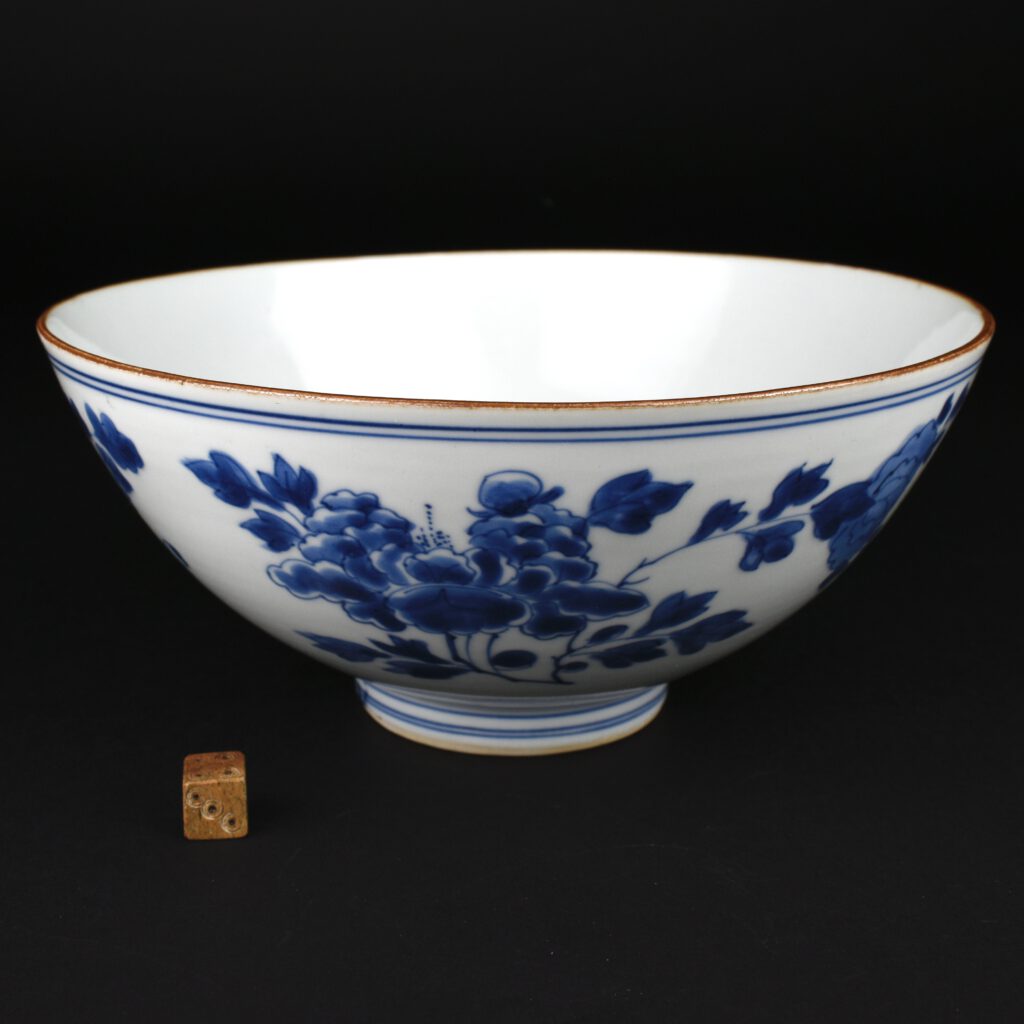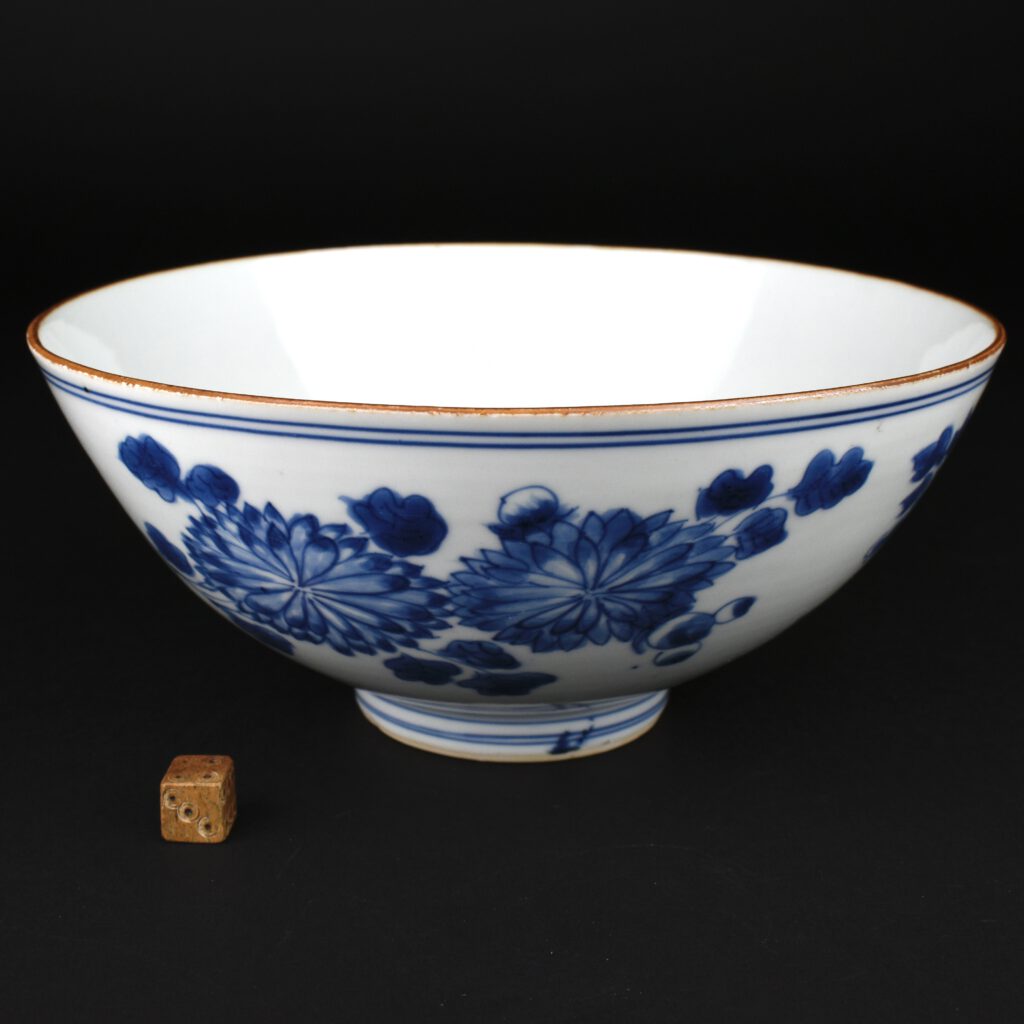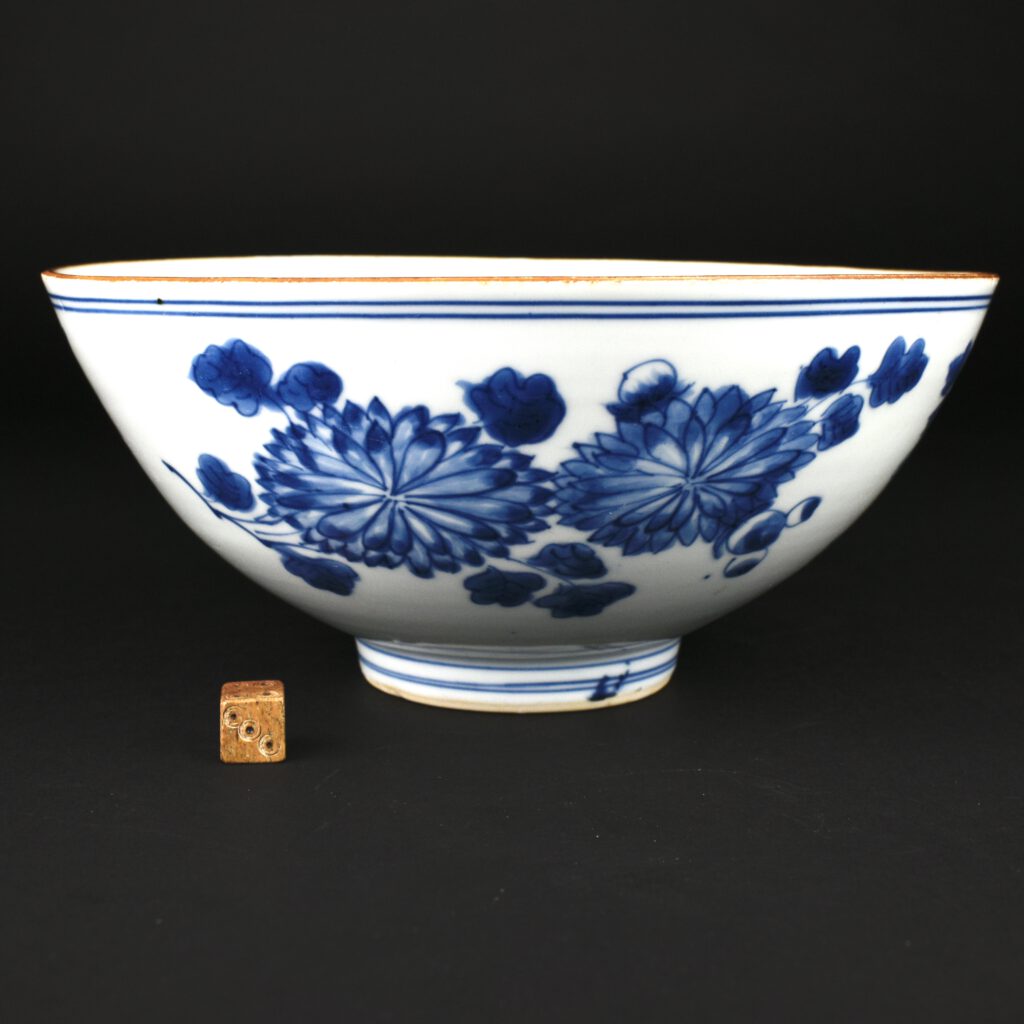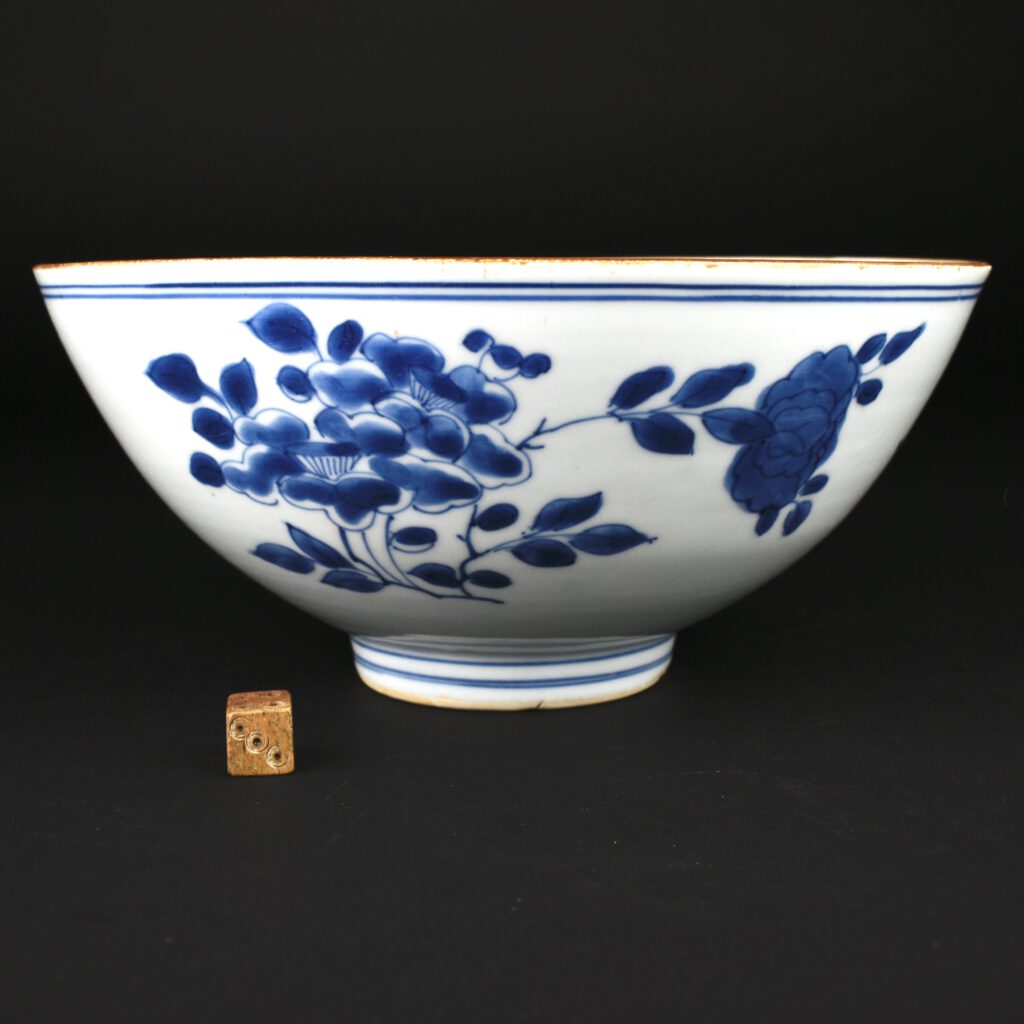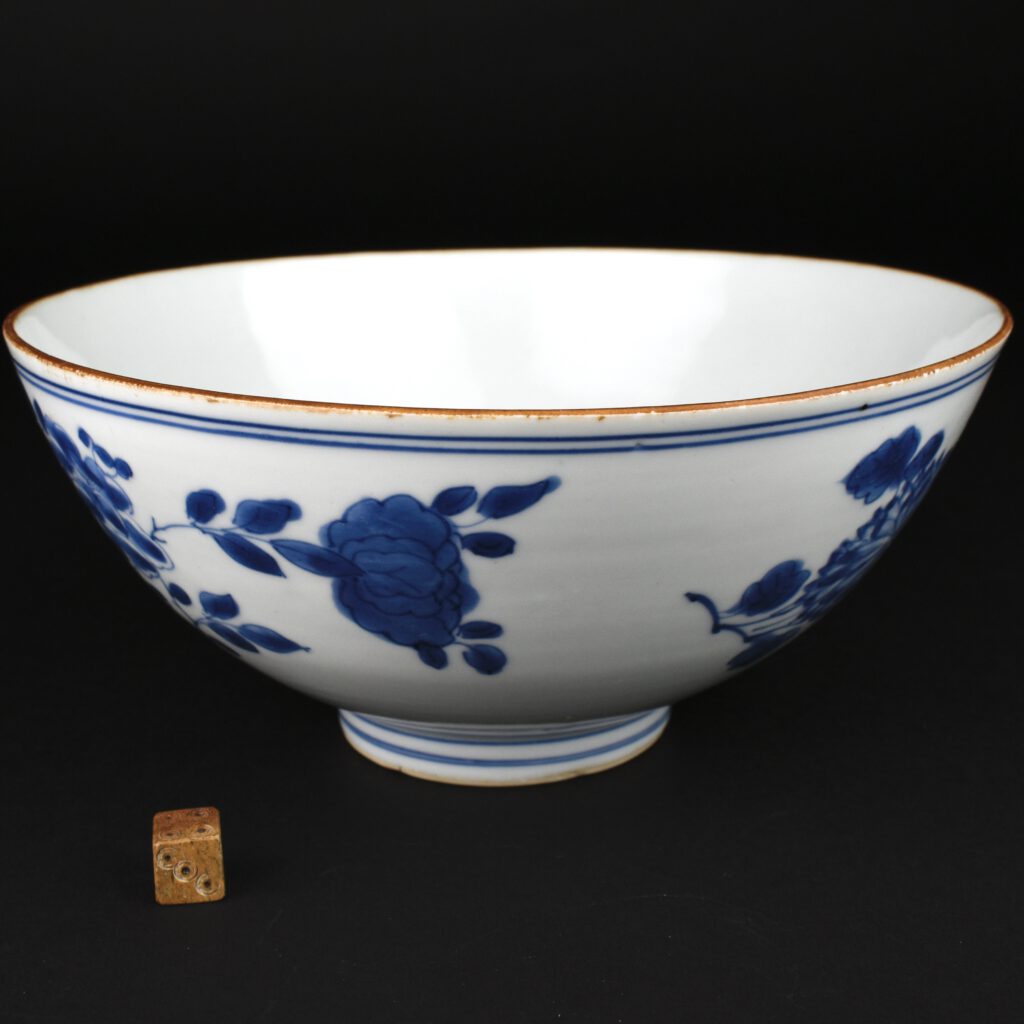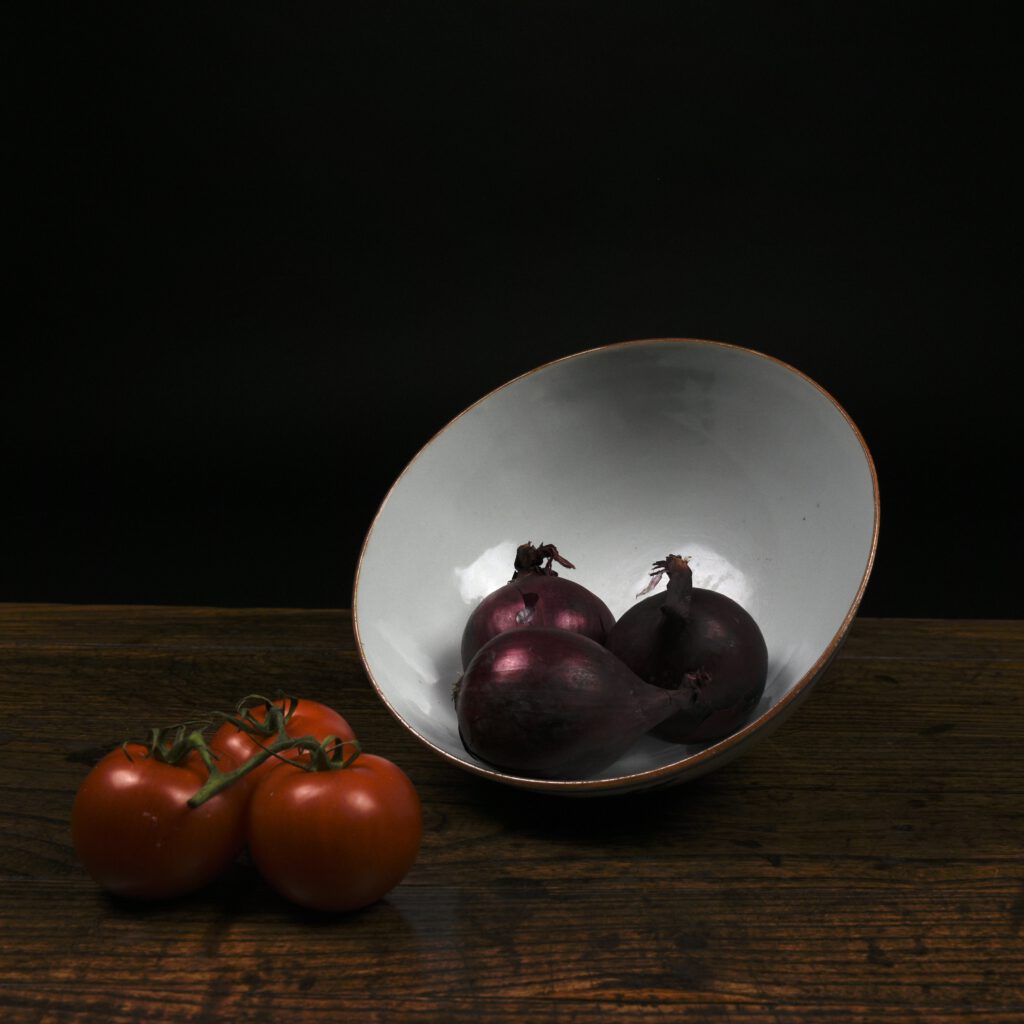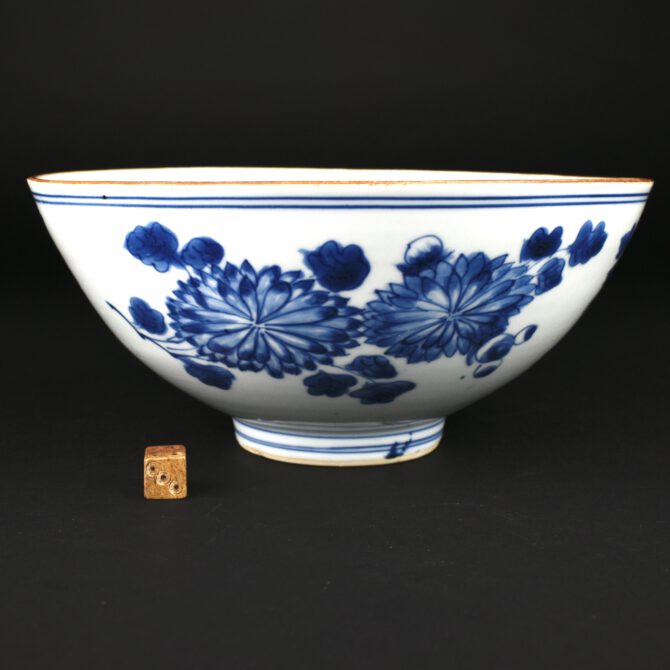
A Transitional Blue and White Bowl, Shunzhi Period
A Transitional Blue and White Porcelain Bowl, early Qing Dynasty, Shunzhi period 1644-1661. The rounded sides of this thickly potted bowl are painted with three groups of flowering branches, Chrysanthemum, peony and the third, probably peach. The rim is dressed in thick iron oxide which is typical of the Shunzhi period. The interior is left plain and the deep base has a four-character mark within concentric circles. The mark on the base can be translated as Hall of Virtuous Fragrance (The New and Revised Handbook of Marks on Chinese Porcelain. Gerald Davison, 2010. ISBN 978-0-9564518-0-4. Page 95, mark 1077). A rather different bowl from the Butler Family collection purchased from Robert McPherson Antiques shows some similarities in the decoration, see : Shunzhi Porcelain, Treasures from an Unknown Reign (Michael Butler, Julia B. Curtis and Stephen Little. Art Services International 2002.) page 133, item 26.
SOLD
- Condition
- In excellent condition, very minor fritting to the outside edge of the iron oxide dressing, some wear to the well of the bowl.
- Size
- Diameter 20 cm (8 inches)
- Provenance
- A rather different bowl from the Butler Family collection purchased from Robert McPherson Antiques shows some similarities in the decoration, see : Shunzhi Porcelain, Treasures from an Unknown Reign (Michael Butler, Julia B. Curtis and Stephen Little. Art Services International 2002.) page 133, item 26.
- Stock number
- 26080
- References
- The mark can be translated as 'Hall of Virtuous Fragrance' see : (The New and Revised Handbook of Marks on Chinese Porcelain. Gerald Davison, 2010. ISBN 978-0-9564518-0-4.) Page 95, mark 1077. A rather different bowl from the Butler Family collection purchased from Robert McPherson Antiques shows some similarities in the decoration, see : Shunzhi Porcelain, Treasures from an Unknown Reign (Michael Butler, Julia B. Curtis and Stephen Little. Art Services International 2002.) page 133, item 26. Also see figure 5, page 46 for a vase with similar decoration.
Information
Shunzhi 1644-1661 :
The Shunzhi emperor (lived 1638 to 1661) was the second emperor of the Manchu Qing dynasty, and the first Qing emperor to rule over China proper. He ascended to the throne aged five (six sui according to traditional Chinese count) in 1643 upon the death of his father, Hong Taiji, but actual power during the early part of his reign lay in the hands of the appointed regents, Princes Dorgon and Jirgalang. With the Qing pacification of the former Ming provinces almost complete, he died still a young man, although in circumstances that have lent themselves to rumour and speculation. In the midst of much upheaval, the Manchus seized control of Beijing in June 1644, and in October of the same year the Shunzhi emperor`s uncle, the chief regent Prince, proclaimed the Qing dynasty to be the legitimate successor to the Ming dynasty. Therefore, although the Shunzhi emperor was not the founder of the Qing dynasty, he was the first Qing emperor of China. His mother was Empress Dowager Xiao Zhuang Wen who was an excellent politician during the period. The young emperor disliked his uncle, the chief regent Prince Dorgon, and after Dorgon`s death in 1650 the emperor stripped both him and Dorgon`s brother, Prince Dodo, of their titles, although he was only 12 years old at the time. During his short reign, the Shunzhi emperor encouraged the Han Chinese to participate in government activities. He was a scholar and employed Han Chinese to teach his children. The emperor married his mother`s niece, but demoted the empress several years later. Four months after his favourite concubine passed away, he died of smallpox. Before he passed away, he appointed four regents to help his son, Hiowan Yei. They were Oboi, Sonin, Suksaha and Ebilun. It was believed that the young emperor did not pass away but left the palace to become a monk.
